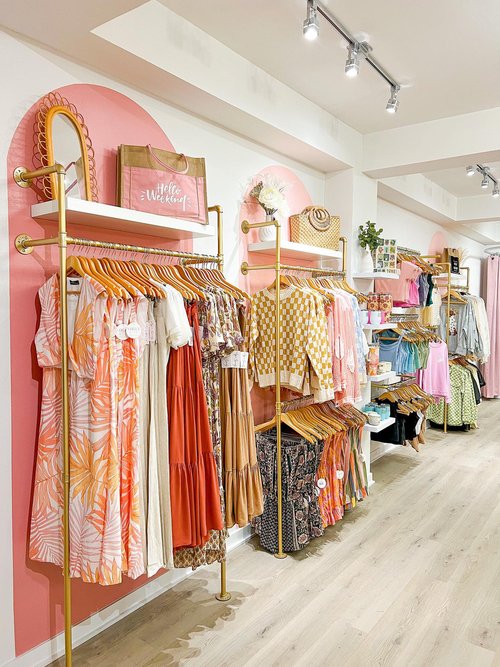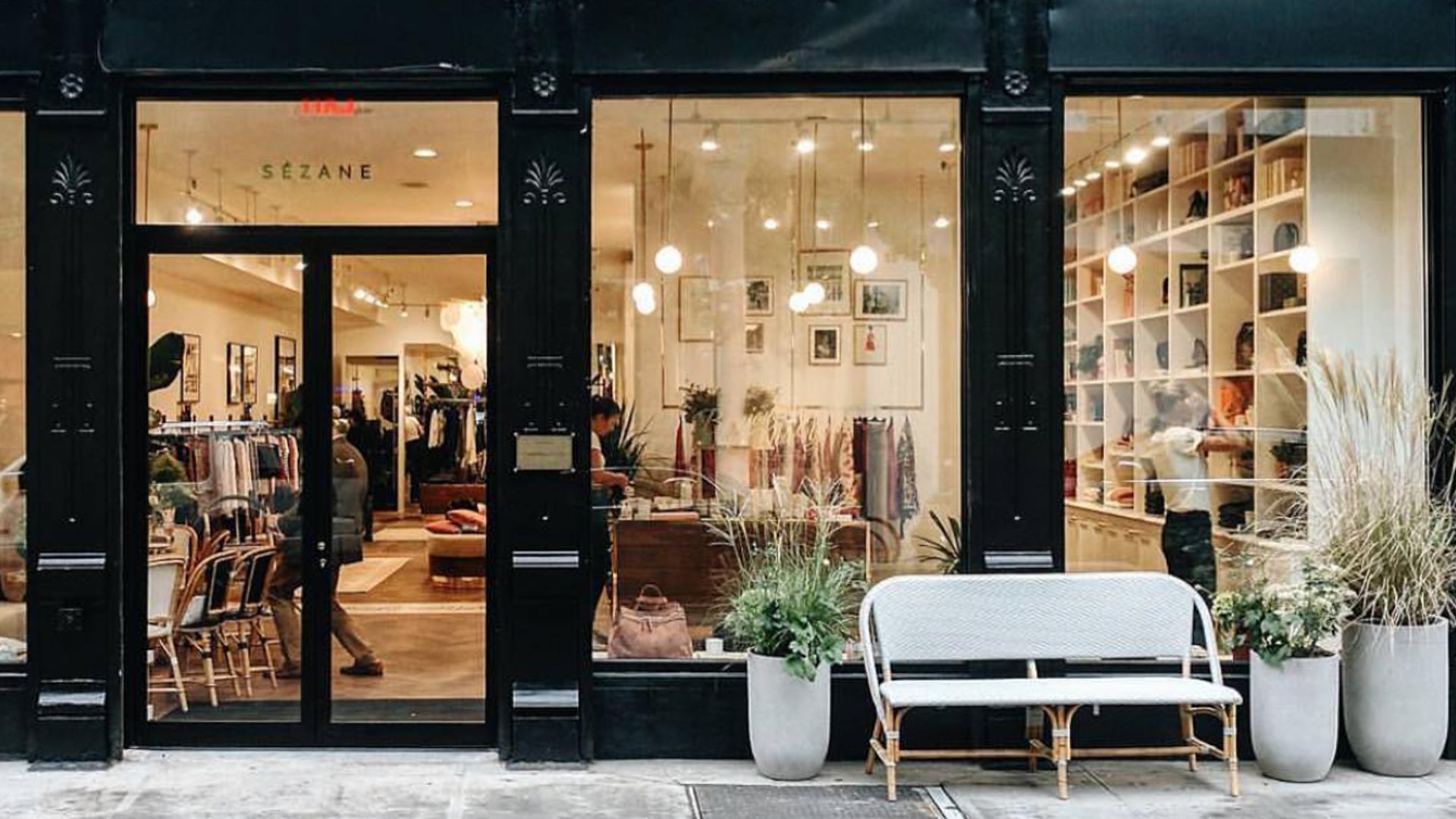How to Style Your Outfits with Boutique Fashion Finds
How to Style Your Outfits with Boutique Fashion Finds
Blog Article
Discovering the Evolution and Effect of Clothing on Modern Style Trends
The evolution of garments has actually considerably affected modern-day fashion trends, combining historic precedents with cutting-edge developments. Famous numbers like Coco Chanel and Yves Saint Laurent transformed the apparel industry by introducing principles that focus on comfort and ease of access, which remain to reverberate today. Meanwhile, technological strides in areas such as 3D printing and clever textiles are redefining design possibilities and consumer experiences. In addition, the expanding emphasis on inclusivity and sustainability is reshaping industry standards. As we consider these multifaceted influences, one must wonder about just how these components jointly redefine style's duty in mirroring and forming contemporary culture.
Historical Fashion Influencers
In the tapestry of fashion background, particular figures have left an enduring mark, forming the patterns and designs that define entire eras. Coco Chanel, a revolutionary developer, redefined ladies's fashion by introducing comfy, sophisticated garments that departed from limiting bodices. Her renowned Chanel match and little black outfit have become classic staples in wardrobes worldwide. Similarly, Christian Dior's post-war "New Look" in 1947, with its party of womanhood through complete skirts and cinched waistlines, marked a go back to opulence and has proceeded to influence developers.
Elsa Schiaparelli is another essential number, renowned for her avant-garde layouts that incorporated surrealist art, working together with Salvador Dalí to create whimsical items that challenged traditional visual appeals. Her cutting-edge use of color and vibrant patterns reverberates in contemporary style. Yves Saint Laurent, on the other hand, democratized high fashion with prêt-à-porter collections, bringing path designs to the masses and setting a precedent for modern-day ready-to-wear lines.
These visionaries, among others, not just transformed fashion in their times yet also set withstanding fads that reverberate in today's fashion industry, giving a foundation upon which contemporary developers proceed to build and innovate. Their traditions highlight the relevance of imagination and bold in fashion's ever-evolving narrative.
Technical Advancements in vogue
Among the vibrant landscape of the style sector, technical advancements stand at the forefront of development, reshaping just how developers create and consumers engage with fashion. The integration of 3D printing has transformed style procedures, enabling designers to experiment with complex structures and lasting materials that were previously inconceivable. This technology promotes rapid prototyping, decreasing waste and speeding up production times.

Smart textiles, installing technology right into fabrics, are likewise changing the sector. Advancements like self-cleaning and temperature-regulating materials offer improved capability and comfort. Wearable innovation, including functions like health and fitness tracking and interaction, includes a new dimension to style, combining aesthetic appeals with usefulness.
Social Changes and Style
As technological developments remain to improve the garment industry, social changes are equally influential, redefining style and consumer preferences. In recent times, the increase of social networks systems has actually increased the circulation of international style patterns, enabling varied social impacts to exist together and assemble. This electronic interconnectivity has assisted in the fast exchange of ideas, causing a much more inclusive and eclectic analysis of design that shows the diverse nature of contemporary society.
Social recognition and admiration have actually triggered designers to draw inspiration from a more comprehensive range of ethnic and historic contexts, integrating conventional motifs with modern appearances. This blend has actually resulted in style that reverberates with a broader audience, advertising a feeling of identity and belonging across various demographics. Furthermore, the enhancing need for customization has driven brand names to use adjustable options, making it possible for consumers to reveal originality while showing their cultural heritage.
Furthermore, shifting societal worths have actually influenced fashion, with inclusivity and diversity ending up being central styles. The market has started to embrace versions and influencers of different body kinds, ethnic backgrounds, and gender identifications, challenging standard elegance criteria. This improvement underscores the power of social shifts fit the future of fashion, as style comes to be a much more authentic expression of cumulative and personal identification.
Sustainability and Modern Design
While the fashion business continues to advance, the crucial for sustainability has come to be progressively immediate, influencing contemporary layout practices. This change intends to deal with ethical considerations and ecological concerns, resulting in a reevaluation of typical production techniques. Developers are currently incorporating sustainable products, such as organic cotton, recycled polyester, and eco-friendly textiles, into their collections, decreasing the environmental impact of style. The rise of slow fashion, which emphasizes top quality over quantity, encourages consumers to purchase ageless items instead than short-term fads.
In addition, modern-day design is defined by its development in minimizing waste and advertising circularity. This technique not just mitigates ecological effect but additionally boosts the social obligation of style homes.

Future Trends in vogue

Sustainability will remain to be a driving pressure in shaping future style trends. The sector is progressively adopting environmentally friendly products and honest production approaches, replying to an expanding consumer you can find out more need for accountable practices. Technologies such as bio-fabricated materials and closed-loop recycling systems are set to redefine just how clothes is generated and taken in, reducing ecological impact while preserving design and high quality.
Social shifts, consisting of the surge of inclusivity and diversity, will certainly also play a crucial function. As culture becomes a lot more familiar with social problems, fashion is expected to come to be a platform for expression and modification. Developers will likely concentrate on producing collections that reflect a wider series of experiences and identities, promoting representation and availability.
Verdict
The evolution of garments significantly affects modern-day style trends, where historical impacts merge with modern layouts. Key figures like Coco Chanel and Yves Saint Laurent have actually redefined design, while technical innovations such as 3D printing and wise fabrics increase imaginative possibilities. Cultural shifts towards inclusivity and sustainability helpful resources force brand names to adopt ethical methods and accept diversity. This ongoing development highlights fashion's function as a mirror to social values and technical development, suggesting a future abundant with advancement and inclusivity.
The development of clothes has considerably influenced modern style fads, combining historical precedents with cutting-edge technologies.Among the vibrant landscape of the fashion industry, technical innovations stand at the leading edge of advancement, reshaping just how developers develop and customers engage with fashion.While the style market continues to advance, the vital for sustainability has become increasingly immediate, influencing modern-day layout methods. As sustainability becomes ingrained in modern layout, it leads the way for an extra accountable and conscious fashion sector.
The development of apparel substantially impacts modern-day fashion fads, where historical impacts combine with contemporary layouts.
Report this page